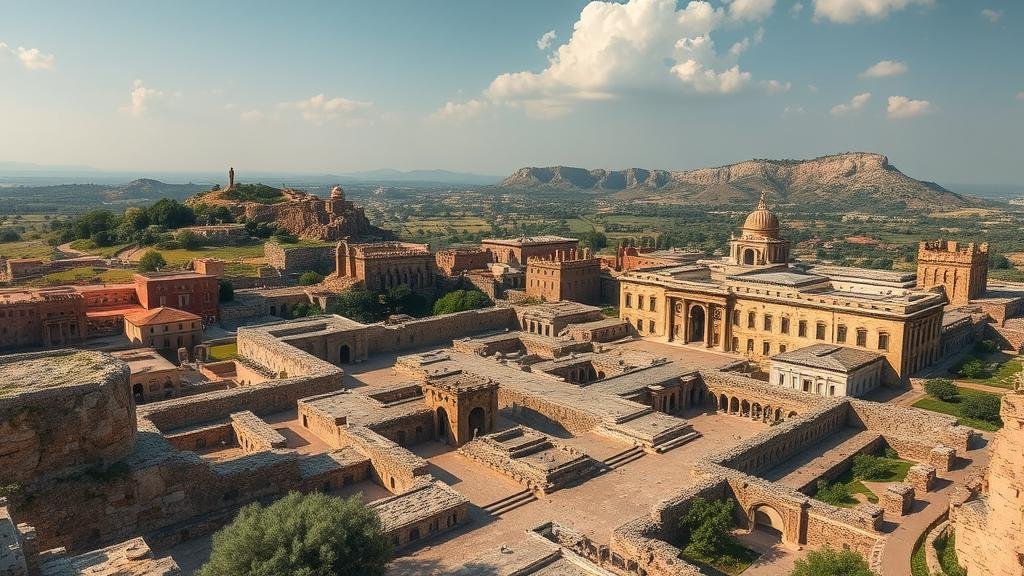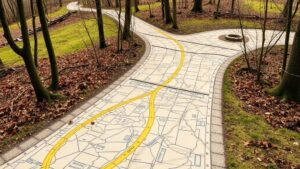Applying AI to Reconstruct Ancient City Layouts for Hidden Relic Clues
Applying AI to Reconstruct Ancient City Layouts for Hidden Relic Clues
The advancement of artificial intelligence (AI) in archaeological research has paved the way for innovative methodologies aimed at reconstructing ancient city layouts. These reconstructions not only shed light on historical urban planning but also assist in uncovering hidden relic clues that contribute to a deeper understanding of ancient civilizations. This article explores the application of AI in reconstructing ancient city layouts, emphasizing key case studies, methodologies, and the potential for future discoveries.
The Importance of Archaeological Context
Understanding the layout of ancient cities is crucial for contextualizing archaeological findings. Urban planning of civilizations such as the Romans and Maya offers insights into their social structures, economies, and cultural values. For example, the city of Pompeii, which famously preserved its urban layout due to volcanic ash, reveals much about Roman life (Beard, 2016). But, many ancient cities are buried or obscured, necessitating new techniques for exploration.
Artificial Intelligence Techniques in Archaeology
AI technology provides several methodologies instrumental in reconstructing ancient layouts.
- Machine Learning: Algorithms can analyze large datasets from satellite imaging, aerial photography, and GIS (Geographic Information Systems) to identify patterns indicative of human activity. Studies have demonstrated that machine learning models can successfully predict the locations of now-hidden structures based on the analysis of surface features (Meyer et al., 2021).
- Computer Vision: Utilizing deep learning and computer vision algorithms allows researchers to reconstruct 3D models of ancient cities from fragmented data, such as images from drones or ground-penetrating radar (GPR). For example, AI has been used to create a 3D model of the ancient Maya city of Tikal, revealing previously unknown structures (Chase et al., 2018).
Case Studies
Case Study 1: The Lost City of Ubar
Ubar, often referred to as the Atlantis of the Sands, is a legendary city purported to have existed in the Arabian Peninsula. Recent AI applications, including machine learning analysis of satellite imagery from the LiDAR system, revealed potential structures in the Rub al Khali desert. In 2019, researchers employed deep learning techniques to systematically identify buried ruins that align with historical records of Ubar (Alsharekh, 2019). This approach showcased AIs ability to merge ancient texts with modern technology for discovery.
Case Study 2: Urban Layout of Angkor Wat
Angkor Wat in Cambodia is the largest religious monument in the world, yet much of its surrounding urban layout remains uncharted. Recent archaeological efforts have integrated AI-powered drones and thermal imaging to map the extensive ruins of Angkors lost city. integration of AI algorithms allows researchers to identify and map massive irrigation systems indicative of an advanced civilization in operation between the 9th and 15th centuries CE. This project highlights how AI facilitates not only mapping urban layouts but understanding their ecological context (Evans et al., 2020).
Challenges and Ethical Considerations
Despite the promising advances, applying AI in archaeology is not without its challenges. Issues such as data accuracy, the potential for misinterpretation of results, and the ethical implications of excavating sites must be carefully considered. For example, reliance on AI could lead researchers to overlook valuable insights from traditional archaeological methods, thus necessitating a balanced approach between technology and fieldwork.
Future Directions
The potential for AI to transform archaeological methodology is vast. Future applications may involve:
- Integration of AI with Augmented Reality (AR): Enhancing the visibility of underground structures and potential relics during fieldwork.
- Collaborative Platforms: Developing shared databases that utilize AI analysis across various archaeological projects globally, fostering interdisciplinary cooperation.
Conclusion
The application of AI in reconstructing ancient city layouts presents an opportunity to bridge the gap between technology and archaeology, illuminating aspects of human history that have remained shadowy for centuries. As demonstrated through cases such as Ubar and Angkor Wat, AI not only aids in identifying lost urban structures but also enhances our understanding of ancient societies. continued exploration of AIs capabilities promises to unlock further hidden relic clues and enrich our historical narratives.
As researchers continue to push the boundaries of AI in archaeology, it is essential to approach the technology with a critical eye while fostering an ethical framework that respects both the past and the integrity of its discoveries.
References:
- Beard, M. (2016). SPQR: A History of Ancient Rome. Liveright.
- Chase, A. F., & Chase, D. Z. (2018). The Maya Use of Landscape Change. Ancient Mesoamerica.
- Evans, D. H., et al. (2020). Mapping the Angkor Wat Complex with Aerial Drone and Machine Learning. International Journal of Heritage Studies.
- Alsharekh, A. (2019). Uncovering the Lost City of Ubar using AI. Journal of Arabian Studies.
- Meyer, J., et al. (2021). Machine Learning in Archaeology: A Case Study from the Balkans. Archaeological Reviews.



